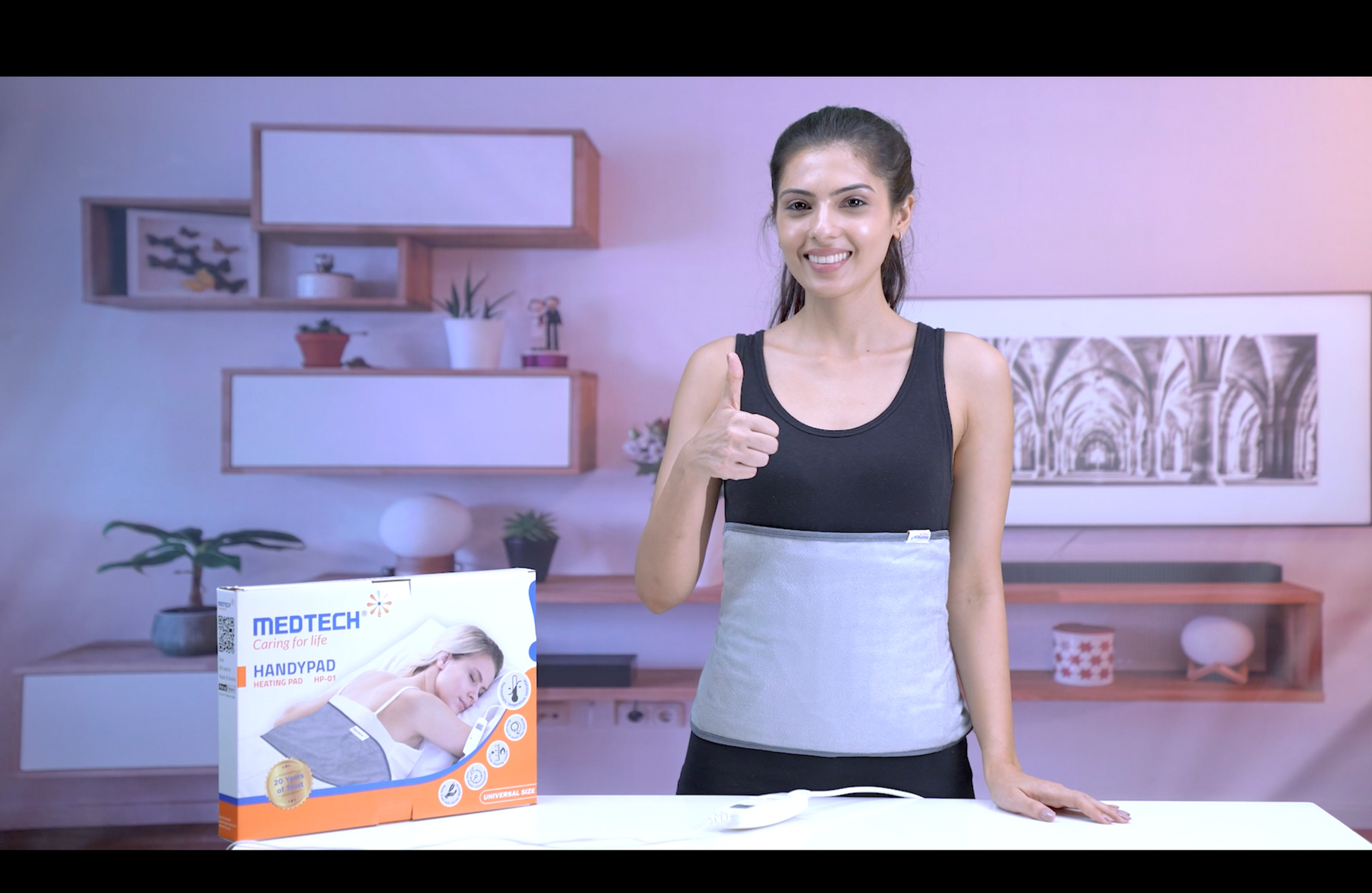Customer Care (10am-6pm Mon-Fri)
-+9172080 88720
Customer Care
(10am-6pm Mon-Fri)
+91-72080 88720

Heating pads are a great way to help reduce muscle pain, and they can be used to reduce soreness and stiffness in the muscles. Heating pads are a form of heat therapy, which is a common form of physical therapy used to treat various pains and ailments.
Heating pads work by increasing the temperature of the affected area, which then increases the blood flow to the area, allowing the muscles to relax. This increased blood flow brings oxygen and nutrients to the muscles, allowing them to heal faster and reducing the pain.
The heat from the heating pad also helps to reduce inflammation, which can be a contributing factor to muscle pain. When using a heating pad, it is important to monitor the temperature closely to make sure it is not too hot. If it is too hot, it can cause burns or skin irritation. However, the Medtech Heating Pad has a heat level controller through which you can control the heat level as per your choice and be free from the skin irritation caused by too high and too low temperatures.
It is recommended to start off with a lower temperature and then slowly increase it as needed. Using a heating pad can be a great way to reduce muscle pain. It can be used to treat sore muscles after exercise, as well as chronic pain.
It is important to talk to your doctor before using a heating pad, and to follow their instructions when doing so. Using a heating pad can also be beneficial for relaxation. The heat from the heating pad can help relax the muscles and the mind, allowing for a more restful sleep. This can help reduce stress and tension, and can help improve overall health.
Tips for using a heating pad:
When using a heating pad, it is important to use it safely and follow the instructions provided.
On which muscles heating pads are used?
Heating pads are commonly used on the lower and upper back, neck, shoulders, and abdomen, legs, arms. Heating pads can also be used to treat chronic pain and muscle spasms, as well as to reduce tension headaches.
Lower back: Lower back is one of the most common areas to use a heating pad. This is because the lower back is one of the areas of the body that gets the most tension and stress. The heat from the pad helps to loosen the muscles and soothe any pain or stiffness. Heat can also be used to treat chronic lower back pain, which is often caused by tightness in the muscles.
Neck: The neck is another area that can benefit from a heating pad. Many people experience tension and stiffness in the neck due to stress, poor posture, or injury. Applying heat to the area can help to relax the muscles and reduce any pain or discomfort.
Shoulders: They are often the site of tension and soreness due to poor posture or repetitive motions. Applying heat to the shoulders helps to relax the muscles and reduce any pain or stiffness.
Abdomen: Abdomen muscles are often tight, which can lead to back pain, cramps, and bloating. Applying heat to the abdomen helps to relax the muscles and reduce any pain or discomfort.

Are heating pads good for muscle recovery?
Yes, heating pads are good for muscle recovery. Heating pads provide a gentle heat that helps to relax the affected muscle area and increase blood flow. This increased blood flow helps to deliver essential nutrients and oxygen to the muscles, aiding in their recovery. Heat also helps to reduce inflammation and soreness, making it easier to move and exercise. To maximise the benefit of a heating pad, it is important to use it correctly. Heating pads should be used for no more than 15 to 20 minutes at a time. It is important to use the correct temperature setting, as using a heat setting that is too high can cause burns.
How long should you keep a heating pad on a sore muscle?
It is important to remember to not leave the heating pad on for too long. If you leave the heating pad on for more than 30 minutes, you risk burning your skin or damaging your muscle tissue. Additionally, it is important to remember to keep the heating pad at its lowest setting, as too much heat can cause further injury.
In addition to the time you spend using a heating pad on a sore muscle, it is important to take breaks in between sessions. Taking breaks gives your muscles time to relax and heal, which can help reduce inflammation and pain. You should aim to take a break of at least 10 minutes in between heating pad sessions.
Finally, if your sore muscle does not improve after several sessions with the heating pad, it is important to seek medical attention. You may have an underlying condition that needs to be addressed or a more serious injury that needs to be treated. In summary, it is important to follow the recommended guidelines when it comes to using a heating pad on a sore muscle.
By following the guidelines, you can reduce the risk of further injury and ensure that your sore muscle is healing properly.
Leave a comment